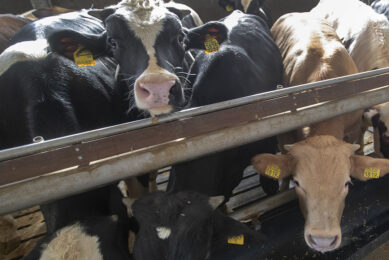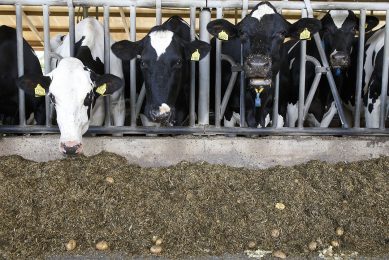Research: Antimicrobial use on Canadian dairy farms
Antimicrobial use (AMU) data are critical for formulating policies for containing antimicrobial resistance. The present study determined AMU on Canadian dairy farms and characterized variation in AMU based on herd-level factors such as milk production, somatic cell count, herd size, geographic region and housing type.
Drug use data were collected on 89 dairy herds in 4 regions of Canada, Alberta, Ontario, Québec, and the Maritime provinces (Prince Edward Island, New Brunswick, and Nova Scotia) for an average of 540 d per herd.
Dairy producers and farm personnel were asked to deposit empty drug containers into specially provided receptacles.
Antimicrobial use was measured as antimicrobial drug use rate (ADUR), with the unit being number of animal defined-daily doses (ADD)/1,000 cow-days.
Antimicrobial drug use rates were determined at farm, region, and national level.
Combined ADUR of all antimicrobial classes was 14.35 ADD/1,000 cow-days nationally.
Results
National level ADUR of the 6 most commonly used antimicrobial drug classes, cephalosporins, penicillins, penicillin combinations, tetracyclines, trimethoprim-sulfonamide combinations, and lincosamides were 3.05, 2.56, 2.20, 1.83, 0.87, and 0.84 ADD/1,000 cow-days, respectively.
Dairy herds in Ontario were higher users of third-generation cephalosporins (ceftiofur) than in Québec.
Alberta dairy herds were higher users of tetracyclines in comparison to Maritimes.
Antimicrobial drug use rate was higher via systemic route as compared with intramammary and other routes of administration (topical, oral, and intrauterine).
The ADUR of antimicrobials used intramammarily was higher for clinical mastitis treatment than dry cow therapy.
For dry cow therapy, penicillin ADUR was greater than ADUR of first-generation cephalosporins. For clinical mastitis treatment, ADUR of intramammary penicillin combinations was greater than ADUR of cephapirin.
Herd-level milk production was positively associated with overall ADUR, ADUR of systemically administered ceftiofur, cephapirin administered for dry cow therapy, and pirlimycin administered for clinical mastitis treatment.
Herd size and ADUR of systemically administered ceftiofur were also positively associated. In conclusion, β-lactams were most commonly used on Canadian dairy farms.
Among antimicrobials of very high importance in human medicine, the use of fluoroquinolones was rare, whereas third-generation cephalosporins and penicillin combinations containing colistin were used very frequently on Canadian dairy farms.











